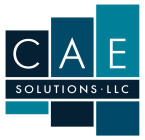This is the first in a three-part series on improving meeting effectiveness.
Honest answer time: what percentage of your day is spent in meetings? Go ahead and look at your calendar over the last week or so and make an estimate (as I tell students, you’ll get more out of this if you play along).
Harder question: what percentage of those meetings are effective and valuable uses of your time? Go ahead and calculate that percentage, too (I already wrote this post, so I can wait…).
Hardest question: What’s the estimated value to you of improving these meetings? If it’s high, or even moderate, this series is for you.
I have spent most of my professional life in meetings, so I feel your pain. Effective meetings are not some elusive creature, a la Bigfoot, but they do require a little effort. This is particularly true in three areas: preparation, focus during the meeting, and accountability after the meeting. Today, let’s focus on preparation. Our discussion assumes you are leading the meeting, but you can adapt these ideas to subtly (or not so subtly) guide others to the same behaviors, so their meetings make good use of your time.
What are you trying to accomplish?
The first thing to do (really in anything, not just meetings) is define your purpose. Now, I’m not just talking about the purpose of the meeting (see next section), but the overall purpose of whatever project or task you are working on.
- Why are you doing this thing?
- What is your desired outcome?
- What would wild success look like?
- How does that relate to bigger picture personal and professional goals, plans, and responsibilities?
These are important questions, but they usually only take about 3-5 minutes to answer sufficiently to improve your meeting’s effectiveness.
Is a meeting necessary?
The great Peter Drucker gave us this gem of a question. Given the purpose you defined, is bringing a group of people together for an hour or so the most efficient and effective way to fulfill that purpose? A few things to remember:
- Efficiency-doing things the right way with minimal waste
- Effectiveness-doing (focusing on) the right things
- A one-hour meeting with ten people is not one hour, it’s ten hours because that’s how much productive time is taken away from the organization in an ineffective meeting
Another funny, but critically important question: can this be handled by email? We’ve all seen the buttons of people who survived another meeting that could have been an email or a quick chat in the hall. Stop for another 1-2 minutes to really think about whether or not a big, formal meeting is necessary before just calling one.
(Bonus tip: most calendar apps default to one-hour meetings. Take 1 more minute to decide how long you really need if your meeting is going to be focused and on purpose. Maybe it’s only 30 minutes, maybe it’s two hours, but better to know and set expectations appropriately.)
What are your objectives?
Assuming you’ve determined that a meeting is needed to fulfill your purpose, the next step is to identify the specific objectives to complete during the meeting. Each of these objectives should be clearly related to the overall purpose. If not, re-visit your purpose or find another forum or way to achieve that objective. Each objective also represents an agenda item. Agenda you say? What is this mythical tool of focus (speaking of Bigfoot)? Every meeting needs an agenda, distributed to participants (preferably in advance with preparatory action items), that is followed carefully during the meeting. Time to identify objectives and simultaneously draft an agenda: about 5 more minutes (we’re up to about 10, if you’re counting…and still awake).
Who needs to be in the meeting and why?
One way meeting preparation goes wrong is just scheduling a one-hour meeting. Another is inviting anyone and everyone. An important question: who needs to be in this meeting to achieve these objectives to fulfill this purpose? And why do they need to be there (or what roles do they need to play)? Being able to tell an invitee, “we are meeting to fulfill xyz purpose by focusing on abc objectives, and I need you to be there because of efg” is incredibly powerful and motivational for an attendee. This is the kind of stuff that makes people sit up straighter, take their role seriously, and stay awake. I’m not kidding…I’ve seen it happen. Oh, and by the way, “because you may need to know the information from the meeting later” is a perfectly legitimate reason to invite someone, as long as they know that’s why they’re there. Identifying the right participants and their roles takes another 5 minutes or so.
The last thing to do is finalize logistics: date, time, location, room reservations, send notice of the meeting along with the agenda, and prepare any copies or other items. Also, this translates just fine into the virtual and hybrid meeting world. In some respects, it’s even easier (no room reservations, no copies-just email it or attach it to the calendar event)!
So, in about 15 minutes you’ve prepared an immense amount of information to focus your meeting and make it more efficient and effective. And you haven’t even had the meeting yet.
Come back next time and we’ll talk about how to use the actual meeting time in wiser and more effective ways. Your attendees will thank you…trust me, I’ve been on both sides enough to know.
Want these blog posts delivered straight to your inbox each week? Click here to subscribe.
Follow us on social media at the links below.




